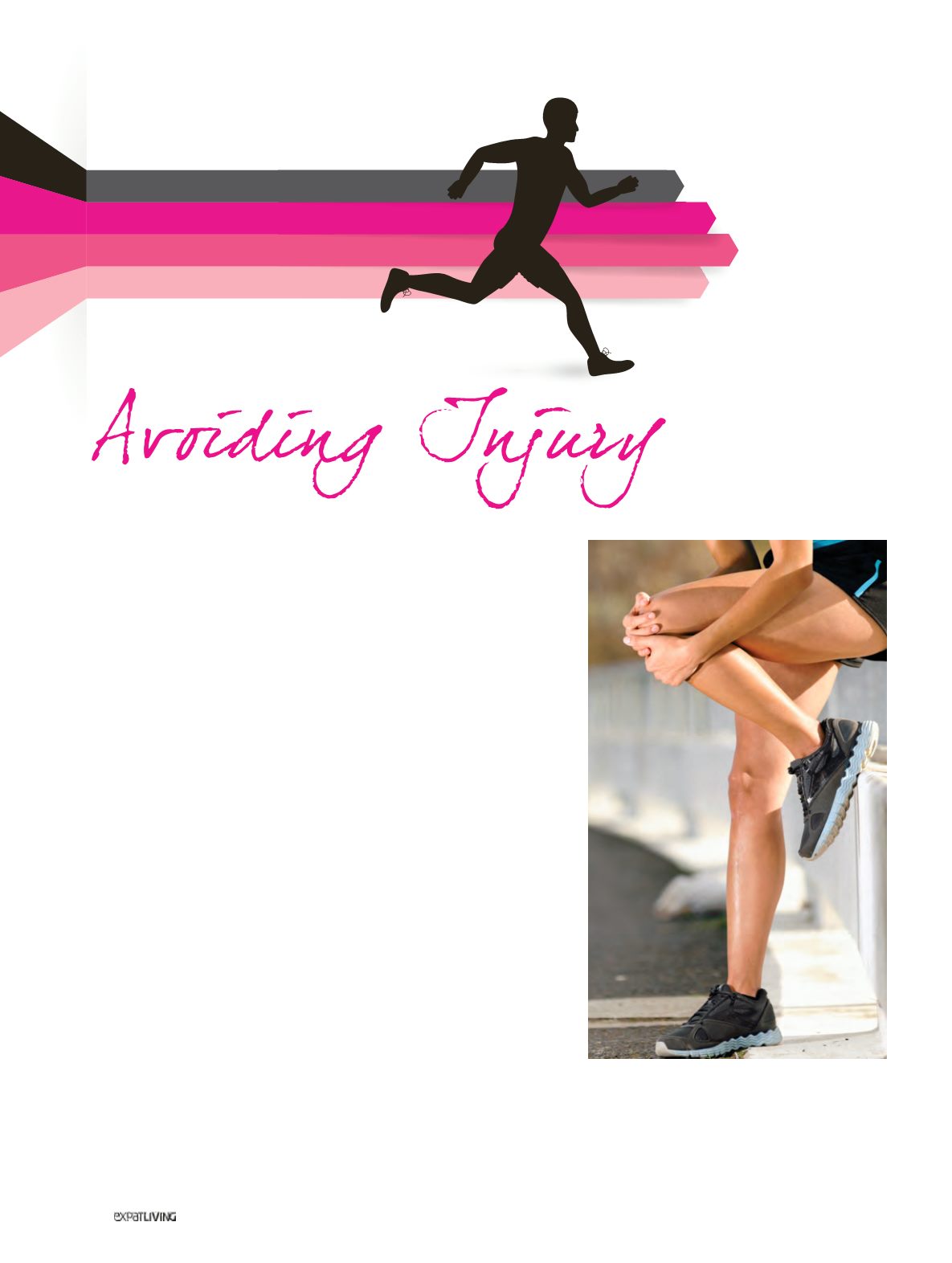

104
Aug-Sep15
HEALTH&FITNESS
COMMENTARY:
RUNNING
Too much, too soon – that’s what
gets you injured. But when your
heart is set on something, it can
be hard to heed the messages
your body is sending. For some
expert advice,
Verne Maree
chats to two expat athletes –
Australian SUZY WALSHAM
and Kiwi BEN PULHAM, and,
for good measure, also gets
a couple of pointers from
Aussie physiotherapist SIMON
RAFTERY.
W
hen I ask Suzy to tell me
about her injuries, she
laughs and says, “How
much time do you have?”
She describes herself as a very “fragile”
athlete who was usually injured for at
least three months of every year that
she spent racing on the track. “It’s better
now that I’m focused on stair-racing,”
she says – Suzy is the current world
champion stair-racer – “but I still get
injured if I do too much running.”
For those who want the gory details,
her litany of injury woes includes: “14
stress fractures (femur, fibula and tibia),
a broken foot (it broke during a race),
a dropped metatarsal, two or three
calf strains or pulls per year, several
hamstring strains and an achilles injury.”
Is injury inevitable?
According to Suzy – and she should
know! – injuries are generally due to a
combination of overtraining, incorrect
technique or biomechanics, inadequate
rest and recovery, poor diet, and not
dealing properly with niggles when they
first appear.
“I’ve never met an elite athlete who
hasn’t been injured at some point in
their career,” says Suzy. “When you’re
pushing your body to the maximum, it’s
not surprising that things break down
from time to time.”
Though Ben believes there are a
number of things that runners of all
levels can do to lower their chances of
injury – especially those who run purely
for fitness or pleasure – he agrees that
it’s pretty inevitable that an elite runner
will suffer injury at some point. In his
own ten years as an elite triathlete, he
says, he suffered from typically overuse-
related injuries like runner’s knee and
iliotibial-band syndrome.
“But I always took a conservative
approach to injury: I figured it was better
to take a day off in order to avoid a week
off, or a week off to avoid a month off.
This approach served me well and for
the most part, I was able to train very
consistently for 10 years.”
Common injuries
Simon reckons that runner’s knee and
shin splints are the two most common
problems. Correct diagnosis from a
sports doctor or physiotherapist is
extremely important, he says.
“With shin splints, for instance, if you
have a full-blown stress fracture – which
is an actual crack in the lower leg bone –



















